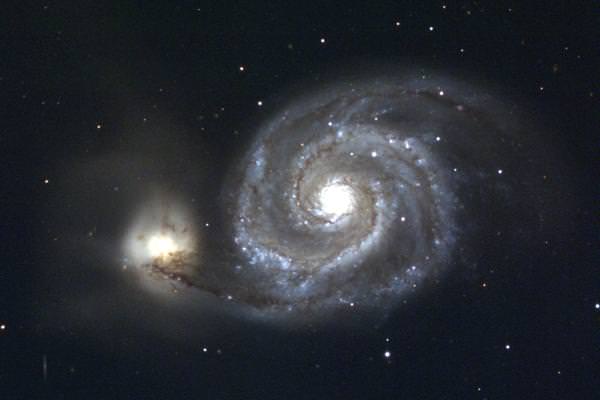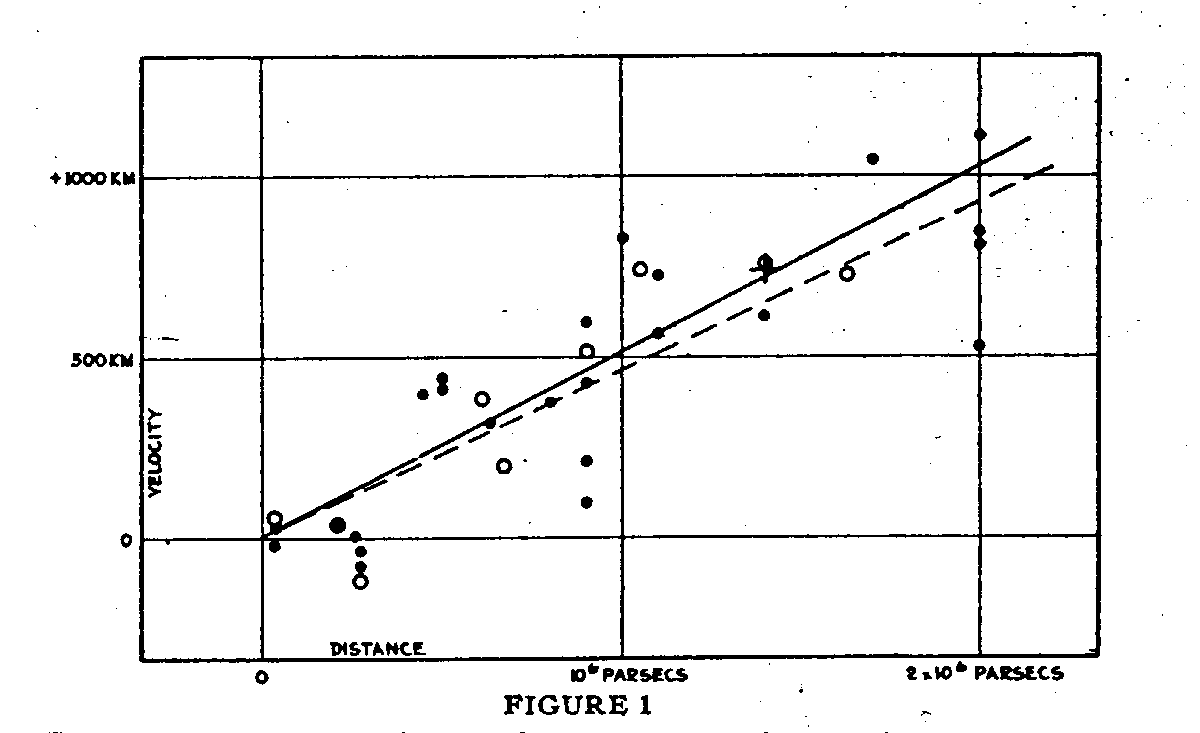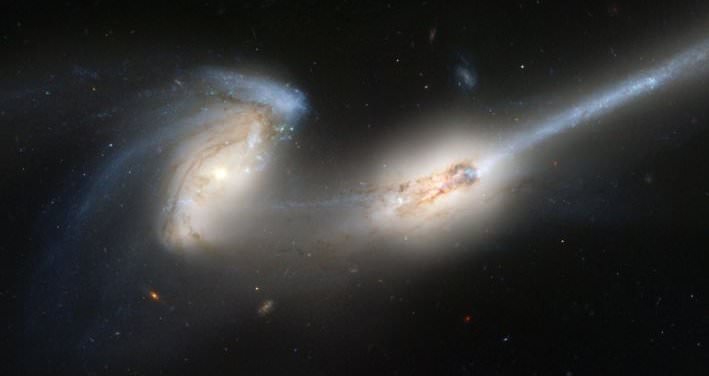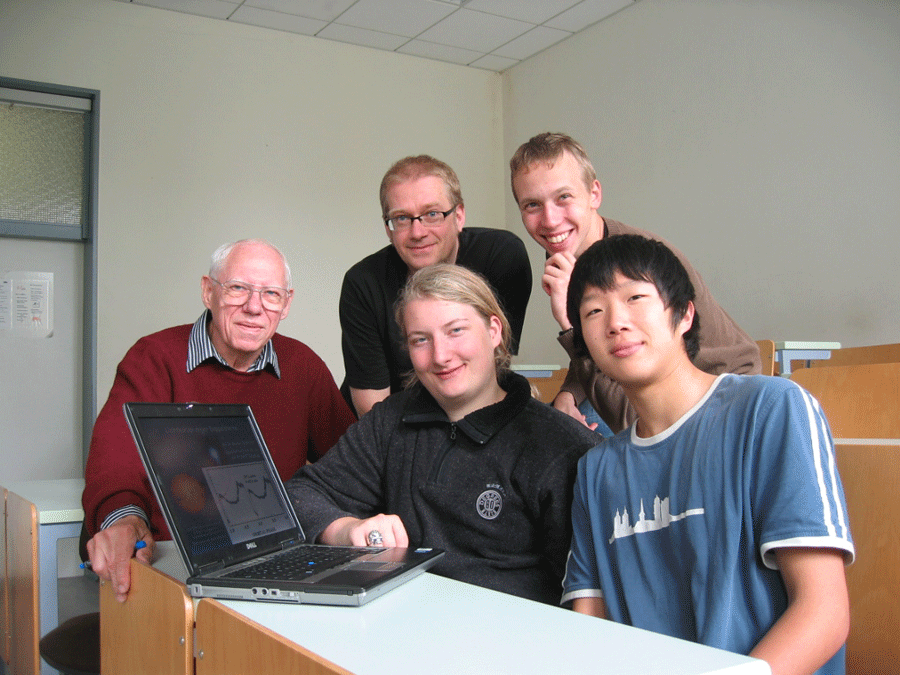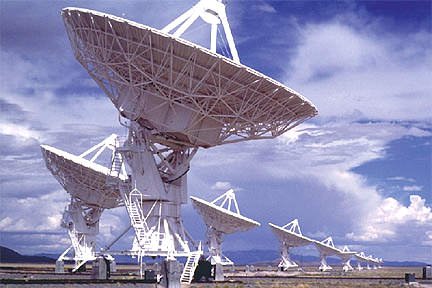Spiral galaxies are undoubtedly one of the most beautiful structures in the universe. Yet, their simple elegance belies a complex nature. How do such structures not “wind up” and what causes them in the first place? The answers to these questions is a long standing challenge. Under one model, spiral structure is created by spiral density waves. In another, they are induced by tidal interactions. It is this approach that is explored in a new paper by Dobbs et al., accepted for publication in the Monthly Notices of the Royal Astronomical Society. Specifically, the authors attempted to use modeling of tidal forces to recreate the structure of the spiral arms on the grand design spiral, M51.
 To model the interaction, they began with a model of a simple galaxy with a mass distribution (broken into a disc, bulge, and halo) similar to that for M51. Their initial galaxy was initially free of spiral structure, but “gravitational instabilities in the stars [Note: as opposed to the galactic gas. Not in individual stars.] produce a multi-armed” and patchy spiral structure (known as a flocculent spiral). This flocculent nature was first predicted in a 1964 paper by Toomre and has been simulated numerous times since then. Dobbs’ team then introduced a point source to represent the smaller galaxy (NGC 5195) along the orbital parameters derived by previous simulations of Theis and Spinneker in 2003.
To model the interaction, they began with a model of a simple galaxy with a mass distribution (broken into a disc, bulge, and halo) similar to that for M51. Their initial galaxy was initially free of spiral structure, but “gravitational instabilities in the stars [Note: as opposed to the galactic gas. Not in individual stars.] produce a multi-armed” and patchy spiral structure (known as a flocculent spiral). This flocculent nature was first predicted in a 1964 paper by Toomre and has been simulated numerous times since then. Dobbs’ team then introduced a point source to represent the smaller galaxy (NGC 5195) along the orbital parameters derived by previous simulations of Theis and Spinneker in 2003.
For the first 60 million years, significant new structure was not evidence. The disc showed some perturbation due to the approaching companion, but no new spiral structure arose. However, by 120 million years from the start of the simulation, hints of a spiral arm on the side of the galaxy closest to the companion begin forming and by 180 million years, two pronounced “grand design” spiral arms dominate the face of the galaxy, spanning over 15,000 light years.
But the arms were too good to last. By 240 million years, the arms only stretch to a mere 6,500 light years as the gravitational forces from the companion seem to shepherd the galaxy’s gas as it is pulled around in its orbit. By 300 million years, the spiral arms have grown again and the pair looks remarkably similar to the present state of the M51/NGC 5195 system.

The authors note several features their simulation has in common with the observed galaxy. On the side where the companion first approached the galaxy, they note a “kink” in one arm (labeled as A in image to left). Another similarity is a splitting of one of the spiral arms although, again, the exact positioning is different (labeled B).
Another comparison the authors made was to the strengths (or amplitude) of various arm patterns (1 arm, 2 arm, 3 arm, etc…) over time. They found that the two armed pattern was the most predominant, but from the mechanics, they determined there were underlying higher armed structures that never fully took hold. However, these higher armed patterns did come close to the strength of the 2 arm spiral. The authors note that this is consistent with the observational findings of another group studying M51 in a work that has yet to be prepared for publication.
However, there are also some differences. A plume of gas extended from the simulated M51 which has no counterpart in actual observations (labeled C). Actual observations show large amounts of gas in front of the companion galaxy which are not present to the same degree in the simulation (labeled D). Lastly, real observations show a noticeable flattening of M51’s arms closest to the companion. Again, these do not appear in the simulation. The authors suggest discrepancies may be due to the over simplistic modeling of NGC 5195 as a point source instead of an extended body, or slight differences in initial parameters when compared to the actual system.
Even with these differences, the authors suggest that their modeling of the interaction shows that spiral structure, at least in this case, is most likely the result of the tidal interaction on M51 by NGC 5195. They also note that spiral density waves are likely not the culprit since other studies have not been able to determine a consistent “pattern speed” for the galaxy (the pattern speed is the angular speed at which the arms would rotate if viewed as a coherent structure). Instead, observations showed that the arms should have different pattern speeds at different radii.
Although their work does not suggest that all spiral structure is formed by tidal interactions with companions, this work makes a strong case for the possibility in many galaxies which would have such companions and M51 in specific. Furthermore, the simulations also reveal that these tidally induced arms are a temporary phenomenon. Since they do not have a fixed speed, they will slowly wind up and as the interaction progresses, the galaxies will be further distorted and eventually merge.
(Thanks to Claire Dobbs for permission to reproduce images from the paper as well as clarification on a few points.)

